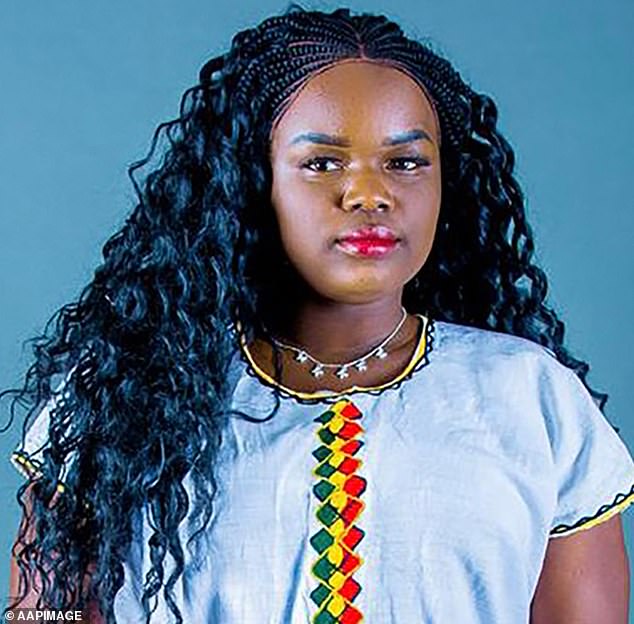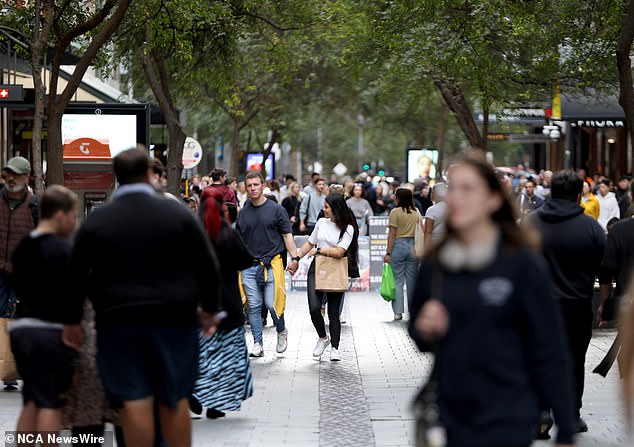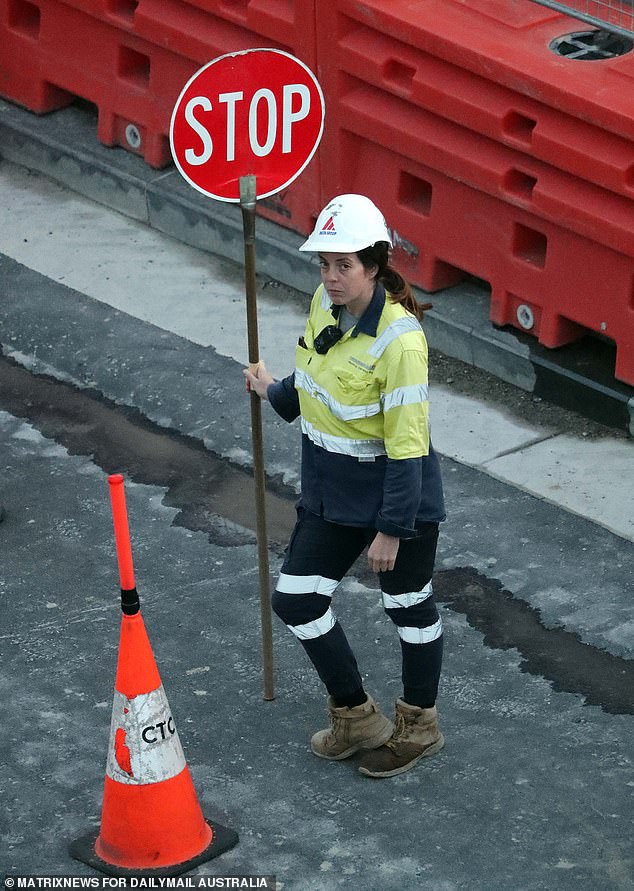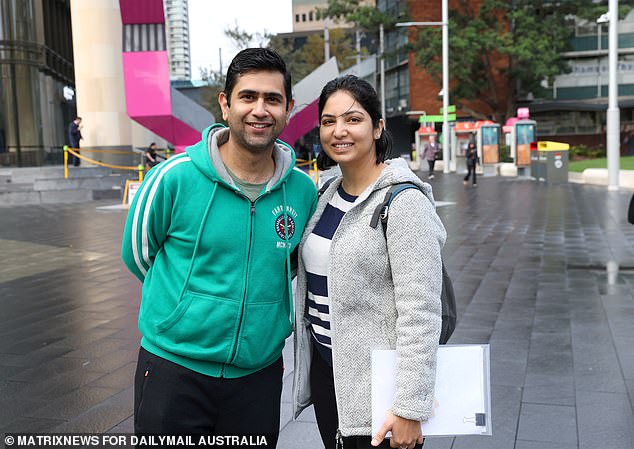A couple who moved to Australia from India are urging the Albanian government to urgently reduce immigration as it was driving up rents and house prices too high.
Himanshu Verma and his wife Shivani, who moved from India to Sydney seven years ago, said the housing crisis had left them and many other migrants struggling.
Although the couple are relatively recent immigrants, Verma said the government needed to consider reducing immigration, saying there was simply not enough housing to cope with the huge influx of people.
“The situation is getting worse, everything is going up in price, even a carton of milk now costs much more than before,” said Ms Verma.
The couple have a young daughter and Mr Verma works full time, while his wife stopped working in December and is now trying to launch her own business.
Himanshu Verma and his wife Shivani. Despite being an immigrant, Verma said the government needed to re-evaluate immigration due to the housing shortage.
Recent immigrants feel the blame for the housing crisis
An Essential Research survey conducted for Settlement Services International (SSI) found that 43 per cent of people with migrant and refugee backgrounds were more likely to have experienced difficulties securing affordable housing in the past 12 months.
More than 1,160 people were surveyed, including people from migrant or refugee backgrounds, as well as Australian-born people who spoke only English.
The survey by the agency, tasked with resettling thousands of newly arrived refugees each year, also found that more than a quarter (26 per cent) had been forced to leave a property due to rising housing costs in the last year.
SSI housing expert Haitham Subhi said the private rental market had become more expensive and scarce in a post-COVID landscape, with average rents around $200 higher than pre-pandemic levels.
Immigrants are victims of rising prices but they are also seen as culpable: 49 percent feel unfairly blamed for the housing affordability crisis.
“They feel the tension and they just want to be given the opportunity to start their new life.”
“The process itself is quite daunting because… you will find yourself going straight to the bottom of the list.”
Ariet Oko Agwa, an Ethiopian refugee who arrived in Australia about six years ago, almost resorted to sleeping in her car with her five-year-old son.
“I applied for a lot of houses and they were all rejected and every time I call them (real estate agents) they don’t give me a reason.”
They were saved at the last minute by members of their ethnic community and were able to stay in a friend’s garage.
“I was almost homeless and then one of the women (from the Ethiopian community) told me that instead of sleeping in your car, you can sleep in our garage because they had three rooms but they were full,” she said.
The struggle to find a suitable home continues for the 25-year-old single mother who grew up in Dadaab, Kenya, one of the largest refugee camps in the world.
The disability care worker lives in shared accommodation near the Gold Coast and pays almost $600 a fortnight for a small room.
Oko Agwa maintains that it is not a conducive environment to raise his son.
She had been forced to adapt to a precarious lifestyle, with only a single bed in her small room, after all her furniture was destroyed by floods in southeast Queensland two years ago.
‘It is very difficult to find a house on my own. Maybe because I’m not from this country,’ she said.

Ariet Oko Agwa was nearly homeless due to a lack of affordable housing.

A record 548,800 net migrants moved to Australia in the year to September and Treasurer Jim Chalmers has admitted the huge influx of international students has led to a serious housing shortage.
Budget plan to face the real estate crisis
A nationwide increase in the number of people arriving in Australia over the past year recently led the federal government to announce a halving of net overseas migration by 2025.
A record 548,800 net migrants moved to Australia in the year to September and Treasurer Jim Chalmers has admitted the huge influx of migrants, as well as international students, has caused a severe housing shortage and pushed prices up to unprecedented levels. .
With an election due in a year’s time, the Treasury now expects the 2023/24 migrant intake to fall to 395,000.
By the end of 2024/25, foreign entry was expected to halve, to just 260,000, down from 528,000 in 2022/23.
But in the five years to 2027/28, 1.38 million net migrants are still expected to move to Australia.
A huge influx of international students since Australia reopened after the Covid pandemic in late 2021 has sparked a housing crisis, with rental vacancy rates in the capital now below one per cent, leading to increases double-digit annual rents on weekly rentals.
Dr Chalmers used his third Budget speech on Tuesday night to admit that the huge influx of international students under Labor has worsened the housing crisis.
‘Australia’s international education sector is a national asset. But for too long, enrollments have increased without being accompanied by an increase in the supply of student housing,” he said.
‘This puts pressure on prices and rents, especially in our cities and suburbs.
‘It makes finding housing more difficult for everyone. “We have a more substantial and more sustainable approach.”
Dr Chalmers announced that universities would need to build more housing for international students if they wanted to continue to rely on their initial fees to generate a lucrative income stream.
With a shortage of construction workers, forcing universities to build more accommodation is expected to make it harder for the higher education sector to accept so many enrolments.
International students make up the majority of long-term arrivals in immigration figures, capped at 190,000 permanent people.
“If universities want to accept more international students, they need to build more student accommodation,” Dr Chalmers said.
“We will limit the number of international students each university can enroll based on a formula, including the number of homes they build.”
From July, Labor wants 1.2 million homes to be built over five years, but only 168,690 new homes were built last year, well below the target of 240,000 a year.

Labor promises to halve immigration levels within a year and tackle the rental crisis by forcing universities to build more accommodation for international students.
The government is also cracking down on the standards of vocational education providers by ensuring that 70 per cent of graduating international students are employed after graduating in 2024/25.
Education is Australia’s largest services export and third overall after coal, iron ore and natural gas.
Labor is also scrapping the Administrative Appeals Tribunal, which has seen asylum seekers use the court system to gain permanent residency.
It is establishing a new Administrative Review Tribunal to replace the AAT “to address judicial delays associated with large numbers of applications for judicial review of immigration decisions”.


